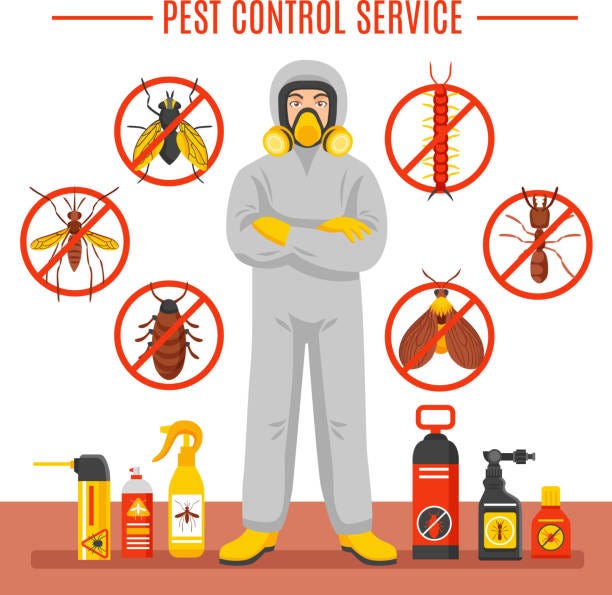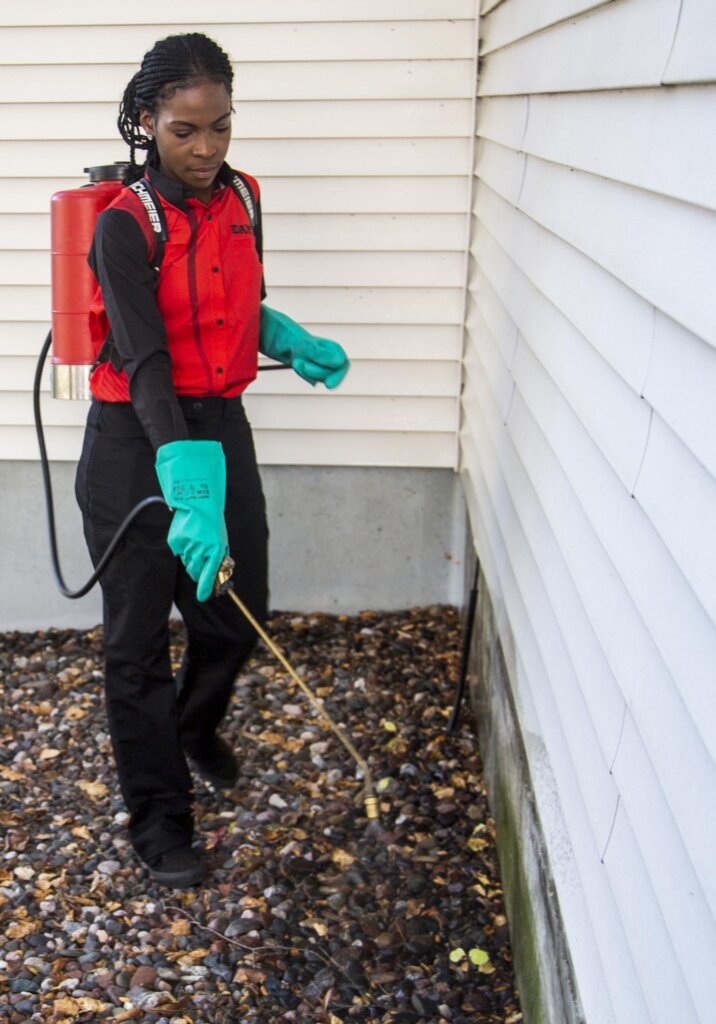Reliable Insect Control Services: A Thorough Consider Elimination Techniques and Avoidance Procedures
In the world of bug control solutions, the successful management of infestations calls for a careful strategy that integrates numerous methods and steps for both eradication and prevention. From Integrated Bug Management (IPM) strategies that prioritize lasting remedies to chemical extermination techniques designed for targeted removal, the collection versus parasites is complex and huge. Biological control techniques and physical avoidance actions supply different courses to effectively combating undesirable intruders. Nevertheless, the trick to an extensive insect control strategy lies not just in the techniques themselves, yet likewise in the careful expert assessment treatments that come before and notify them. By comprehending the complexities of each method and exactly how they interplay, one can genuinely understand the complexity and efficiency of modern-day bug control solutions.

Integrated Pest Management (IPM) Strategies
Integrated Pest Monitoring (IPM) Methods encompass a comprehensive method to pest control that focuses on monitoring, prevention, and control approaches to effectively handle parasite populations. By integrating different methods, IPM aims to lessen the effect of bugs while additionally minimizing the dependence on chemical pesticides. Prevention exists at the core of IPM, stressing techniques like appropriate cleanliness, upkeep of hygiene, and sealing entrance points to hinder bugs from infesting structures.
Chemical Extermination Methods
Chemical elimination techniques are generally employed in pest control solutions to efficiently remove parasite populaces that position a hazard to human health and wellness and residential property. These strategies include using various chemical substances specifically created to target and eliminate insects such as pests, rodents, and other undesirable creatures. The application of pesticides, pesticides, rodenticides, and other chemical representatives is meticulously regulated to guarantee optimum efficiency while decreasing dangers to human beings, pet dogs, and the environment.
Among the vital advantages of chemical extermination techniques is their ability to offer fast and targeted outcomes, making them particularly beneficial in situations of extreme invasions or immediate pest control needs - a1 commercial pest control portland. Nonetheless, it is important to stress the significance of correct handling, application, and disposal of these chemical items to avoid unintended damage
Furthermore, integrated pest management (IPM) strategies typically incorporate chemical elimination strategies with other techniques such as cleanliness, environment adjustment, and biological controls to produce a detailed and sustainable parasite control method. By including chemical extermination methods deliberately within an IPM structure, insect control solutions can efficiently handle insect populations while lessening possible risks to human health and the setting.
Biological Insect Control Techniques
Using all-natural predators and bloodsuckers to take care of bug populaces is a lasting technique called organic parasite control. This strategy utilizes the all-natural systems of the ecological community to regulate bug populations without counting on synthetic chemicals. One common biological control read this post here method includes introducing all-natural opponents of the target insect types, such as ladybugs for aphid control or nematodes for termite invasions. These natural killers eat the pests, helping to maintain their populations in check.
An additional effective organic control approach is the use of microbial pesticides. These are naturally occurring bacteria, such as viruses, fungis, and microorganisms, that particularly target and infect specific insect types. By making use of these microbial agents, insect populations can be effectively minimized without harming useful organisms or creating injury to the environment.
Physical Parasite Prevention Procedures
Applying physical pest prevention steps includes using barriers and structural alterations to hinder parasites from infesting a residential or commercial property or entering. Mounting door sweeps, displays on home windows, and securing cracks in the foundation can help protect against insects like bugs and rats from gaining accessibility inside.
One more physical prevention measure is the use of barriers like fence to keep larger insects such as deer or raccoons away from the building. By carrying out these physical parasite prevention steps, building proprietors can substantially lower the threat of insect invasions and the damage they can cause.
Specialist Pest Examination Treatments
Conducting complete and organized pest evaluations is a fundamental facet of specialist parasite monitoring protocols. Expert bug examiners are trained to meticulously analyze residential or commercial properties for signs of infestations, determining pest types, entrance points, and conducive problems. The inspection process generally starts with a detailed assessment of both the exterior and interior of the premises. This involves monitoring for pest droppings, chomp marks, nests, and any type of architectural damages that might suggest parasite task. In addition, inspectors might utilize specialized tools such as wetness meters and borescopes to discover covert infestations within wall surfaces or crawl areas.

Conclusion
Finally, reliable pest control services use a read more variety of strategies, including Integrated Parasite Monitoring methods, chemical extermination methods, biological controls, and physical avoidance steps. Professional parasite evaluation treatments play a critical duty in recognizing and dealing with pest concerns in a timely way. By carrying out a mix of these approaches, residential property owners can effectively handle and prevent parasite problems.
From Integrated Bug Monitoring (IPM) techniques that prioritize lasting options to chemical elimination techniques More Info created for targeted removal, the collection versus pests is substantial and diverse.Integrated Pest Administration (IPM) Methods encompass an extensive strategy to pest control that concentrates on surveillance, control, and avoidance approaches to effectively manage bug populaces.Chemical elimination strategies are generally employed in insect control services to efficiently remove parasite populaces that posture a threat to human health and property.Utilizing natural killers and bloodsuckers to take care of pest populaces is a lasting technique recognized as biological pest control.In final thought, efficient bug control services use a selection of techniques, consisting of Integrated Insect Administration methods, chemical extermination approaches, organic controls, and physical prevention actions.